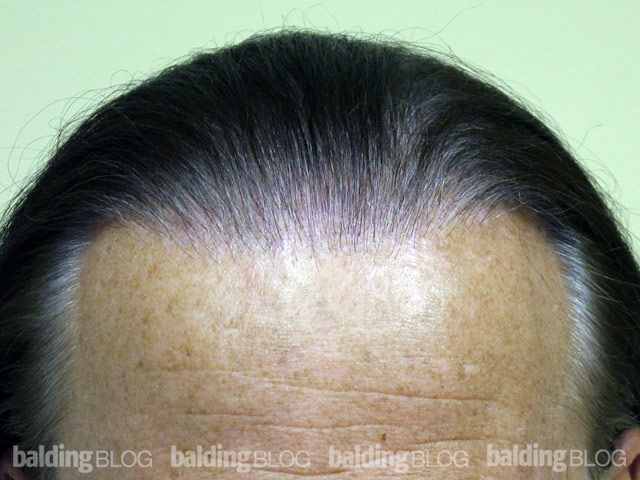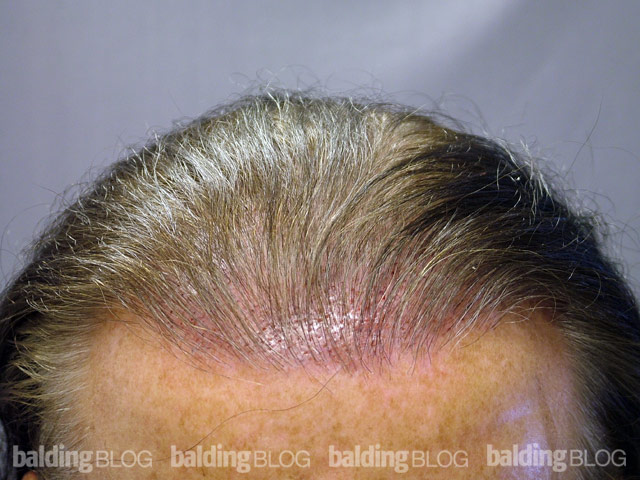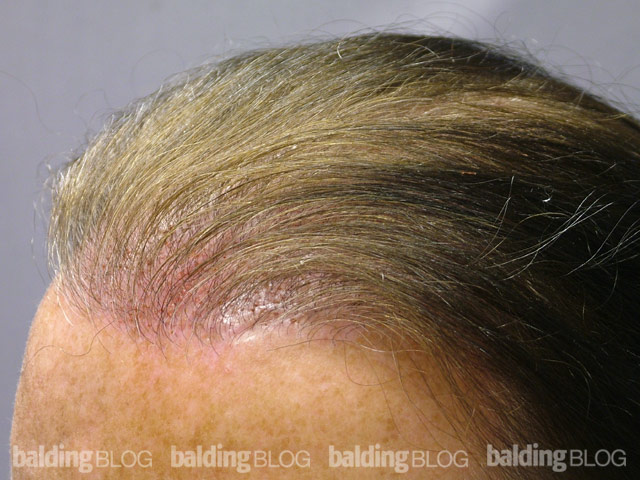Doctor; I had my 4th hair transplant last October with the same surgeon who had done the prior 3. No complaints the first 3 sessions; I had decided to do a final “touchup”, filling in the front a bit more and adding to the crown.
Big Mistake.
My donor area on the left side was totally butchered; a patch about 1 1/2X 1 1/2 inches totally barren and badly scarred. I knew something was wrong immediately after surgery. The hair was gone the next day-immense pain and tightness was in the wound and there was redness also there. On the left side, there was a scab in the middle of the patch that took 2 months to heal.
The right side was similar but not quite as bad. The hair eventually grew back on the right side around 2 1/2-3 months. Its now been over 7 months; I do not expect anything will ever grow on the left side. The sutures seemed placed extremely high above the edges of the wound, also suspicious. I was told by the surgeon that everything was fine; these things “always resolve”.
Finally a month ago, after seeing my predicament, he tepidly agreed that re-growth wasn’t in the cards. He said he would do “Scar revisions”? This did not seem right, so I sought 2 other opinions, both saying scar revision considering the circumstance was definitely the wrong way to go, and that transplanting hair into the area, in 2 small sessions, was the best way to handle it.
Do you have any advice for me?

Scars from any surgery are unavoidable. When I performed general surgery, people would judge the surgeon by the appearance of the scar after the surgery. If the scar was barely detectable, then the surgeon was great, but if the scar was stretched or obvious (for example) the surgeon was terrible. If I did 100 appendectomies, about 10 would have a widened scar and 90 would have a barely detectable scar. Was I a great surgeon 90% of the time? How did I select who got the bad surgery? The question sounds silly, but as a surgeon I am humbled all of the time that anything ever healed and I live in a constant state of awareness that there are many things that I can not control. Scarring is just one of them, but I do not abdicate on the awesome responsibility upon me to try to get perfect scars 100% of the time.
I want to know how the scar impacts your styling and your ability to function daily. Since we are talking about visible scars in most situations, we are talking about the ability for the hair around the scar to cover it adequately. The thinning of the hair in the donor area is unavoidable and as more surgeries are done, more thinning can be expected and the scarring risks rise (non-visible and visible scarring are separate issues here). Think of it as follows:
- the donor area has extra skin when the process is started (you can feel this if you put your hand behind your head and move the scalp up and down as it should move at least ½ inch)
- each time you have a procedure, some of the extra skin is removed and eventually the skin may get tighter
- as everyone is different, some people’ skin just gets thinner and not tighter, others get tighter and not thinner, most are a combination of the two. When the skin does not get tighter, the ‘extra’ skin probably re-grows
- every surgery produces more scars below the skin making the skin less mobile to some degree and the amount of this mobility (and binding of the skin to the deep structures of the scalp area) varies in each patient.
Some patients have poor healing wound characteristics in their collagen and as such, become set-up for stretching scars. Unfortunately, these patients may not be obvious in advance of a surgery. For a repair, the surgeon has to decide just how far to push the skin removal process; in other words, he must determine with each surgery just how much skin to remove. If the surgeon takes out too much skin, then the wound may be too tight to close without tension. High tension wound closures are the greatest cause of scarring and reactive hair loss. Sometimes, people just get reaction to the sutures, or the surgery, or they might even get an infection (clinically evident or sub-clinical). Sometimes, scars just happen, not on the first procedure, possibly not the second, but maybe the third. When the scars form, then each patient has to be assessed by a skillful surgeon, hopefully one you trust. I always tell my patients that a surgeon and a patient have a partnership. A good partnership means that the partners stick together in good or hard times. I tell my patients that if anything ever goes wrong with a surgery done by me, any complication from infection to scarring, I am the best partner that they can have because I take full ownership of the responsibilities of the partnership. Money or time has no meaning for me if things went wrong, so I tend to be there to stand by the patient and do whatever is necessary to manage the process. As a general surgeon, I lived with death from accidents and the outcome of cancers that were incurable, but I was a dedicated partner to each and every patient I took on as a surgeon.
First, ask yourself if your doctor is a real partner with you in this process. Then, if he is, discuss the issues so that you understand his thinking. His analysis and what he will do should depend upon the ‘tension’ on the wound when it was closed (at the last surgery) and the dimensions of the strip of skin that was removed. Decisions on how to repair such problems vary with the conditions of the donor area and the scarring above and below the surface. Does you surgeon suspect a reason that the scar formed? If it was very tight and immobile, then removing the scar may not work as a primary surgery for the repair process? How is the hair around the donor scar? If it is good, then the approach will be different than if it is poor. What are the dimensions of the donor scar (the wider it is, the harder it is to remove)? What is the proposed surgical correction and if it is done, why would the surgeon expect a better outcome for the repair than he had on the surgery that produced the problem? What are the alternative approaches to removing the scar? Transplanting the scar may work, but where will the hair come from and what is the risk of the removal of still more hair? Is a balloon a better approach (definitely for the very bad scars) and what about FUE surgery?
It is impossible for me to determine your exact situation without examining you and seeing (and feeling) the status of your donor area. Be sure that the doctor you have is experienced in these repairs and can show you what type of results his experience with such repairs have produced (like showing you other patients who have had such repairs). I can tell you that the only surgeons that never see scarring in surgery are those that do not perform any surgery. Every surgeon sees scars. In standard hair transplants with today’s newer closure techniques, obvious scarring should be present in less than 2% of those undergoing a standard strip excision transplant. Solutions to transplant scarring are there almost all of the time. An alternative solution for you to consider are FUEs (Follicular Unit Extractions) where each hair grouping is removed one at a time and then transplanted into the scar. The use of balloons can produce miracles for the worst of the scars. Both FUE and balloon use require specialized skills, not common to most hair transplant surgeons.
For more info on FUE, please view the FOX Procedure.




